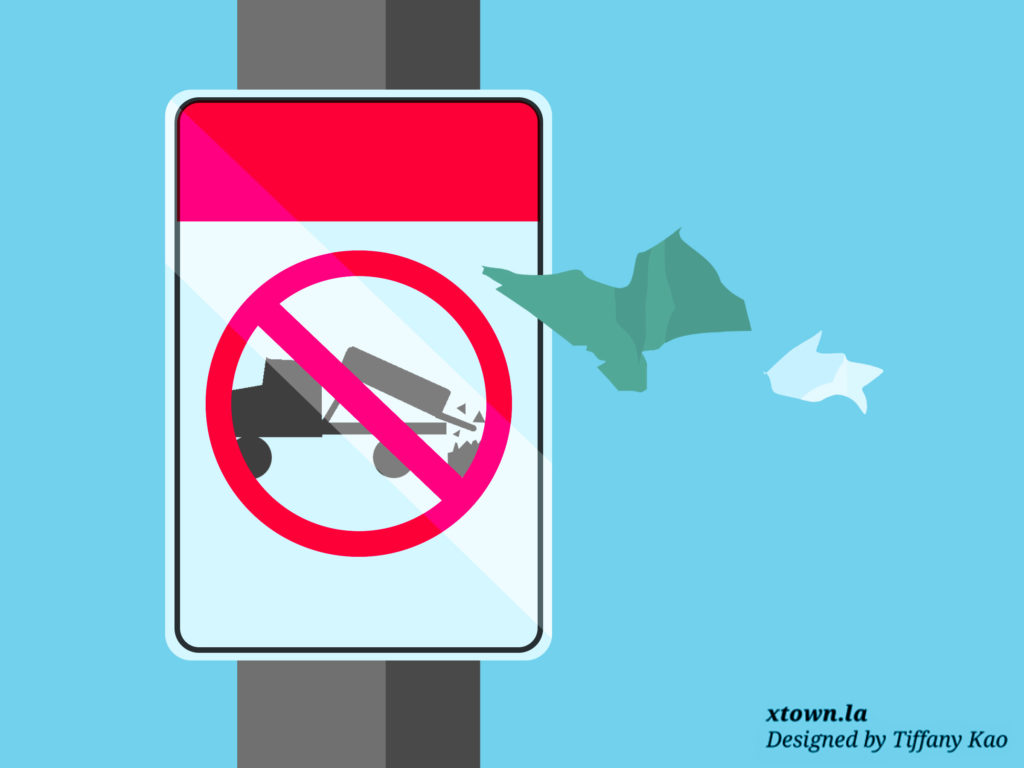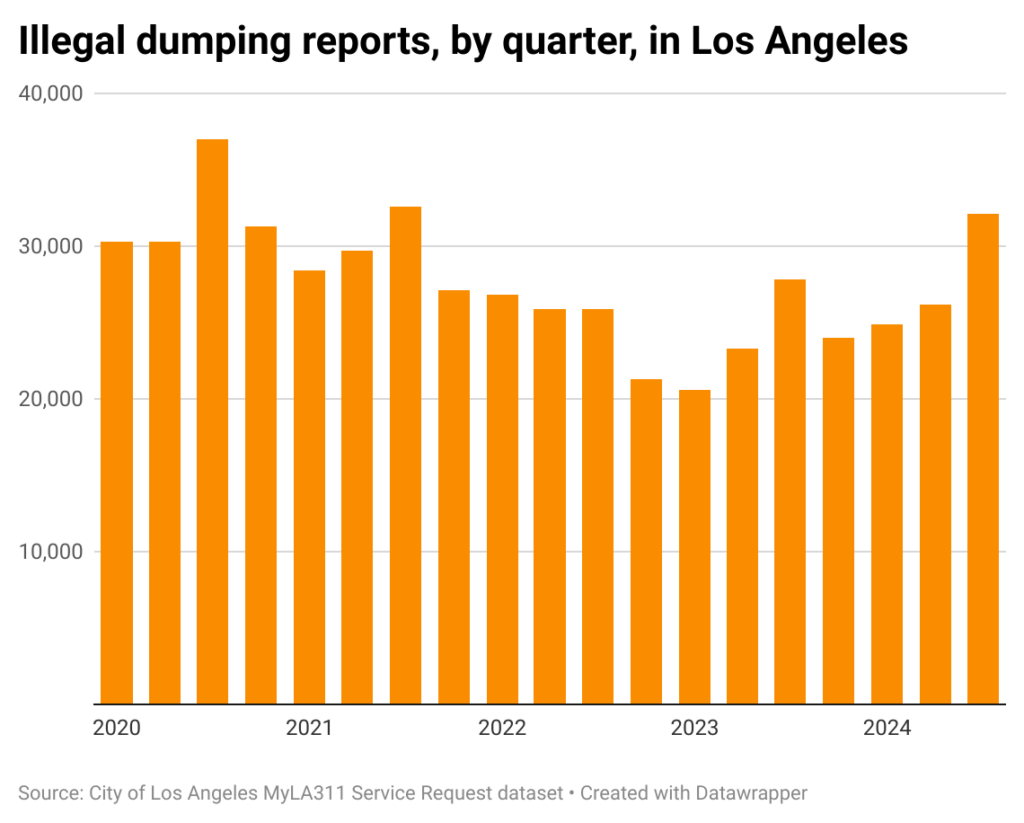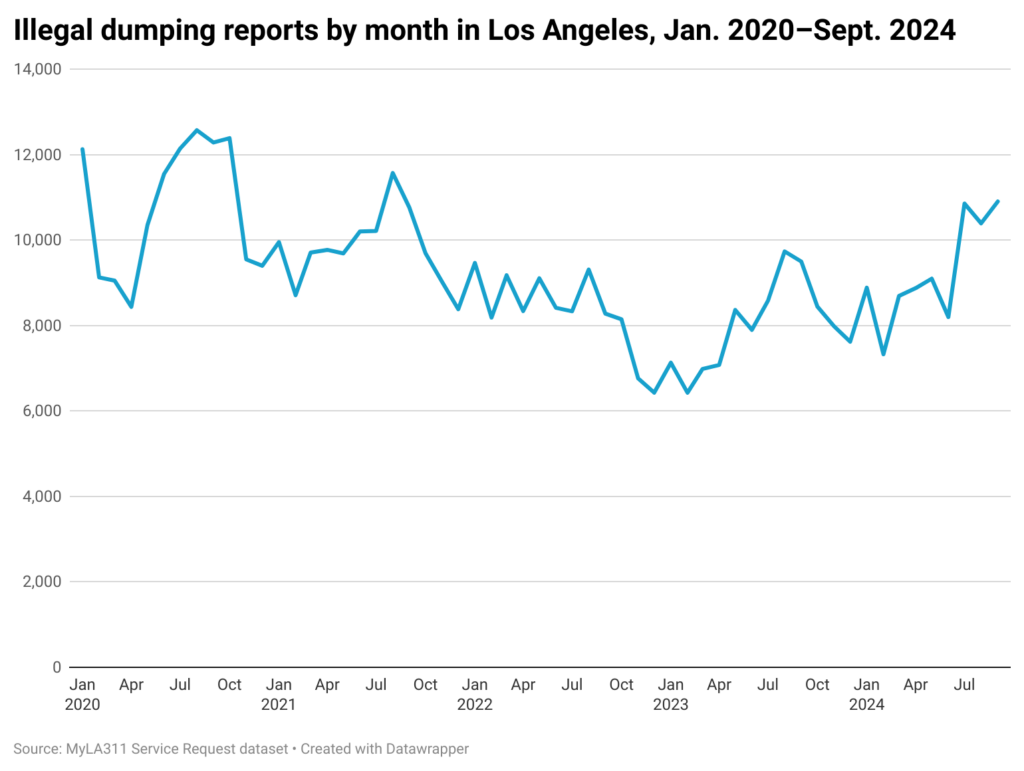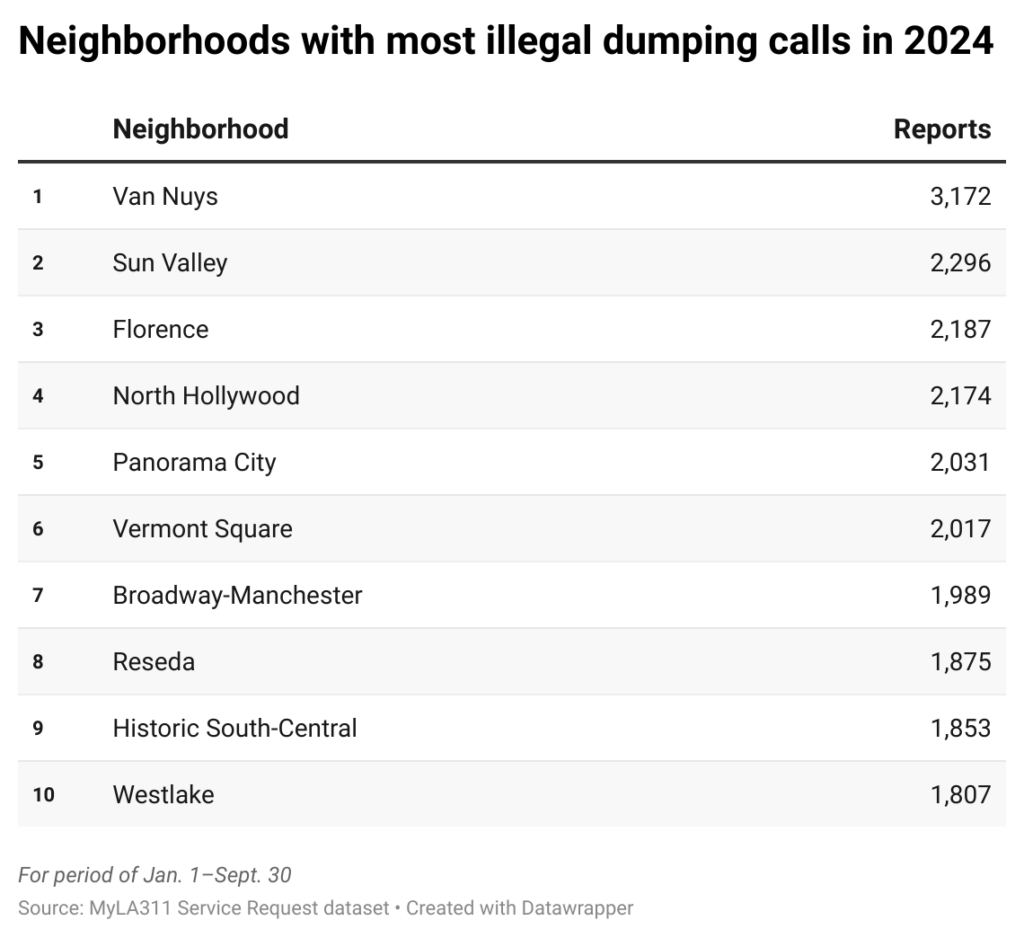Illegal dumping in Los Angeles hits highest level in three years

In 2020, with the pandemic in full effect and many people fearful of getting close to others, illegal dumping in the city of Los Angeles spiked. There were more than 129,000 reports made that year to the MyLA311 system. The count two years earlier was about 100,000.
Then calls began to decline. Although thousands of people each month still dumped everything from shipping material to construction detritus to, in extreme cases, hazardous waste, the overall call volume steadily decreased. In 2023 there were 95,732 illegal dumping reports, according to publicly available MyLA311 data.
[Get crime, housing and other stats about where you live with the Crosstown Neighborhood Newsletter]
Now the situation is flipping again. From July 1–Sept. 30, the city registered 32,145 dumping reports. That is the highest quarterly count in three full years, and represents a 22.8% increase from the previous three-month period.

There is no apparent reason why dumping is increasing, but it comes as overall MyLA311 reports are up. The calls—for a variety of services including bulky item pick-up and graffiti removal—hit 386,000 in the third quarter. In the first three months of the year there were 339,000 reports.
Longstanding problems
Illegal dumping, and attempts to rein it in, are not new to Los Angeles. In 2019, then-Mayor Eric Garcetti threatened a crackdown on people who dumped items in alleys and on vacant lots, rather than pay proper disposal fees. In 2021, then-City Controller Ron Galperin authored a report on the subject, complete with recommendations for how to squelch it.
But there have generally been few if any consequences for those caught in the act, as NBC4 reported in 2023. Even though the city operates an illegal dumping crime tip program with rewards of up to $1,000, few scofflaws are identified and prosecuted.
The current spike came on suddenly but has been consistent. From October 2021 through June 2024, there was not a single month with more than 10,000 illegal dumping reports. However, that count has been eclipsed for each of the past three months, peaking at the 10,901 calls in September.

Dumped-on neighborhoods
Certain neighborhoods have long been plagued by illegal dumping. For years Downtown suffered as the operators of small toy and import businesses chucked their shipping material on the sidewalk or in alleys.
Watts has also historically been the site of copious dumping, as the Los Angeles Times reported. In May Councilmember Tim McOsker, whose District 15 includes that neighborhood and communities such as Wilmington and San Pedro, announced that more than 15,500 tons of illegal dumping in the district had been cleaned up in less than six months.
But no part of Los Angeles gets dumped on more than the San Fernando Valley. According to MyLA311 data, from Jan. 1–Sept. 30, four of the five neighborhoods with the most dumping calls were in the area, topped by the 3,172 reports in Van Nuys. That was nearly 900 incidents more than the second-most impacted neighborhood, Sun Valley.
Also hit hard is South Los Angeles. Four of the 10 communities with the highest dumping counts this year were in that part of the city, including Florence, which registered 2,187 reports.

When illegal dumping is reported, the Los Angeles Sanitation & Environment department handles clean-ups. Reports can be made, for free, on the department’s website or by calling 311 or using the MyLA311 website or app.
How we did it: We examined publicly available MyLA311 service data from Jan. 1, 2018–Sept. 30, 2024. For neighborhood boundaries, we rely on the borders defined by the Los Angeles Times. The city of Los Angeles may update past service requests with new information, or recategorize past reports. Those revised reports do not always automatically become part of the public database.
Have questions about our data or want to know more? Write to us at askus@xtown.la.






